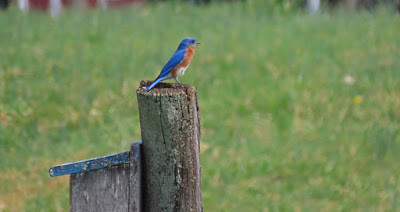 |
Mammoth Cave Formations
|
When I think of National Parks, I normally imagine driving to another state, such as Wyoming or Montana. That's where you find National Parks - far, far, away. But Mammoth Cave is right here in Kentucky, less than a 2 hour drive from Louisville, and we tend to overlook it. And caves, right? You go in the hot weather to enjoy the cool cave tours.
 |
Foamflower, Delphinium and Phlox
|
Even without the world's longest cave system, the above-ground land encompassing
Mammoth Cave National Park would merit its National Park status due
simply to its extraordinary density – and diversity – of plant life.
While the acknowledged "showcase of vegetation" within the Park Service,
Great Smoky Mountains National Park, has approximately 1,500 flowering
species in its more than 500,000 acres, Mammoth Cave National Park
supports more than 1,300 species in only one-tenth of that acreage.
 |
Accessible overlook ramp- Echo Spring
|
Caves and sinkholes are really only accessible to healthy people, able to climb. Folks in wheelchairs, crutches, or just with balance issues, don't dare go to many places at Mammoth Cave. Now, however, the parks people have been working to improve the Handicapped Accessible trails. Echo Spring Trail, for example, has been paved and large size porta-potties installed. Overlooks on the trail have been re-constructed to add clear panels, so people in wheelchairs can take pictures without trying to peer between parts of the fence. The trail has been completed to make a full loop, but the signs are a bit in arrears, so don't pay much attention to them. If you visit at the right times, you can find wild flowers and migrating birds in this valley as well. Since I have lost my balance somewhere, we walked the Heritrage Trail, near the Visitor Center, and down the steep hill to the Green River Ferry and Echo Spring Trail. So far so good for a couple of older folks.
 |
Golden Seal
|
Then we got ambitious and drove to the Cedar Sink Trail, where we heard the wild flowers were terrific. Well, they were right, and the flowers were terrific, but so were the stairs. We managed to hike down the gravel and wood steps, but when we arrived at the metal stars going to the actual sink hole, I said NO, quite firmly. If we walked down there without falling (doubtful) we still have to make it back to the car again. Since it was late April instead of earlier in the season, we saw a variety of different flowers along the trail. With no construction along the trail, Garlic Mustard was not found!
 |
| Bellewort |
 |
Foam Flower, May Apple, Delphinium
|
 |
Fire Pink, Stonecrop and Ragwort
|
 |
Foam Flower
|
 |
Phlox and Jacob's Ladder
|
 |
Bluegray Gnatcatcher
|
The day was gray, cloudy and windy. Another birder reported large numbers of birds found earlier, so we were hopeful. Although we heard lots of birds, we actually sighted very few of them. In a later email, this birder also reported finding few birds on the same day, which made us feel better. Thanks to Steve Kistler who knows all the birds and flowers in the park!
http://hartcountyflora.org/index.html |
Northern Parula
|
When you are out on the trail, you soon find that there is no internet signal to be had. All the birders who rely on their electronic equipment as usually out of luck. Dick got his phone going though, and managed, after several attempts, to lure this Parula close enough for photos. Thanks Dick!
 |
Hooded Warbler
|
A Hooded Warbler guarded his territory while we caught our breath on Cave Sink Trail. "I think I'll rent a video!" he called loudly from the lot of the trees. Unfortunately, this guy did NOT come down for a photo no matter how much we we called, or pished or pleaded. Since we know he was up there, I borrowed a photo of his cousin from another trip. Hey, it's acceptable!

















































